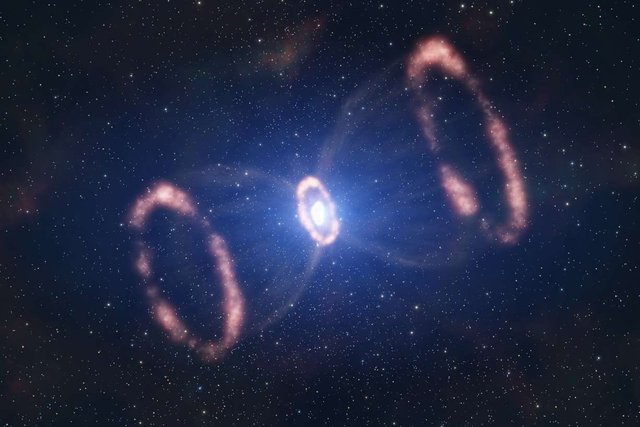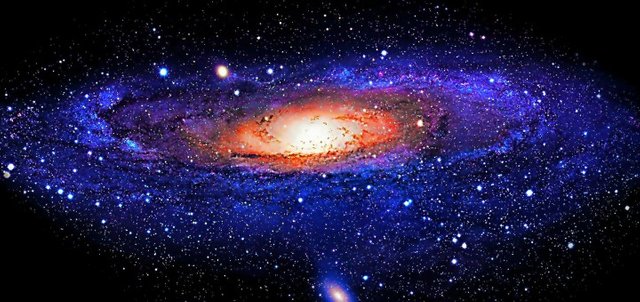Supernova : Definition

This artist's view shows how the material ejected by the supernova SN 1987a is distributed from the information provided by the Sinfoni spectrograph.
A supernova is the cataclysmic explosion of a star that for a time can shine more vividly than an entire galaxy of hundreds of billions of stars. There are essentially two main families of supernovae: SN II and SN Ia.
Two families of supernovae
SN II occurs when massive stars exceeding about 8 to 10 solar masses have exhausted their nuclear fuel. This causes the gravitational collapse of the core, the force of gravity of which is no longer counterbalanced by the pressure of the radiations released by thermonuclear reactions. According to a still poorly understood scenario, a large amount of energy is released and ejects the outer layers of the star to leave only one neutron star or, in extreme cases, a black hole.
SN Ia occurs in a binary system that contains at least one white dwarf. It is probably fair to say that many astrophysics textbooks that are at least ten years old explain the origin of the supernovae SN Ia with a white dwarf accreting material until reaching the famous mass limit of Chandrasekhar. It is known that the stars of the Milky Way evolve mostly as a couple. Many are less massive than the Sun, and like him, they will end their lives peacefully in the form of a white dwarf. In theory at least, for if they are part of a binary system containing a star that has not yet reached the same stage of evolution, their destiny can be much more spectacular. Thus, if they are sufficiently close to a red giant, or even to a star still on the main sequence, the tidal forces of the white dwarf may be such that a transfer of matter from the star to the dwarf takes place. product, increasing its mass.
When it reaches 1.4 solar mass, the laws of quantum mechanics and restricted relativity make it inevitably unstable and must collapse. The process initiates mostly thermonuclear fusion reactions of carbon and oxygen and an explosion then occurs, blowing the whole star.
Since this explosion takes place at constant mass, its intrinsic luminosity must vary slightly. This is very important and therefore SNIa are good indicators of distance to probe the observable universe and study its expansion to billions of light years of the Milky Way. It is precisely these properties that have allowed Saul Perlmutter and his colleagues to highlight the accelerated expansion of the observable cosmos.
It is now thought that many SN Ia would be collisions of white dwarfs.

Hi,
That is a very interesting post. I think it would be very useful, for the readers, to add extra references where more information could be found. In addition, I am fully convinced this will bring you more rewards ;)
Thanks in advance for your consideration.
Congratulations @tsoulix, this post is the tenth most rewarded post (based on pending payouts) in the last 12 hours written by a Dust account holder (accounts that hold between 0 and 0.01 Mega Vests). The total number of posts by Dust account holders during this period was 3806 and the total pending payments to posts in this category was $1020.74. To see the full list of highest paid posts across all accounts categories, click here.
If you do not wish to receive these messages in future, please reply stop to this comment.